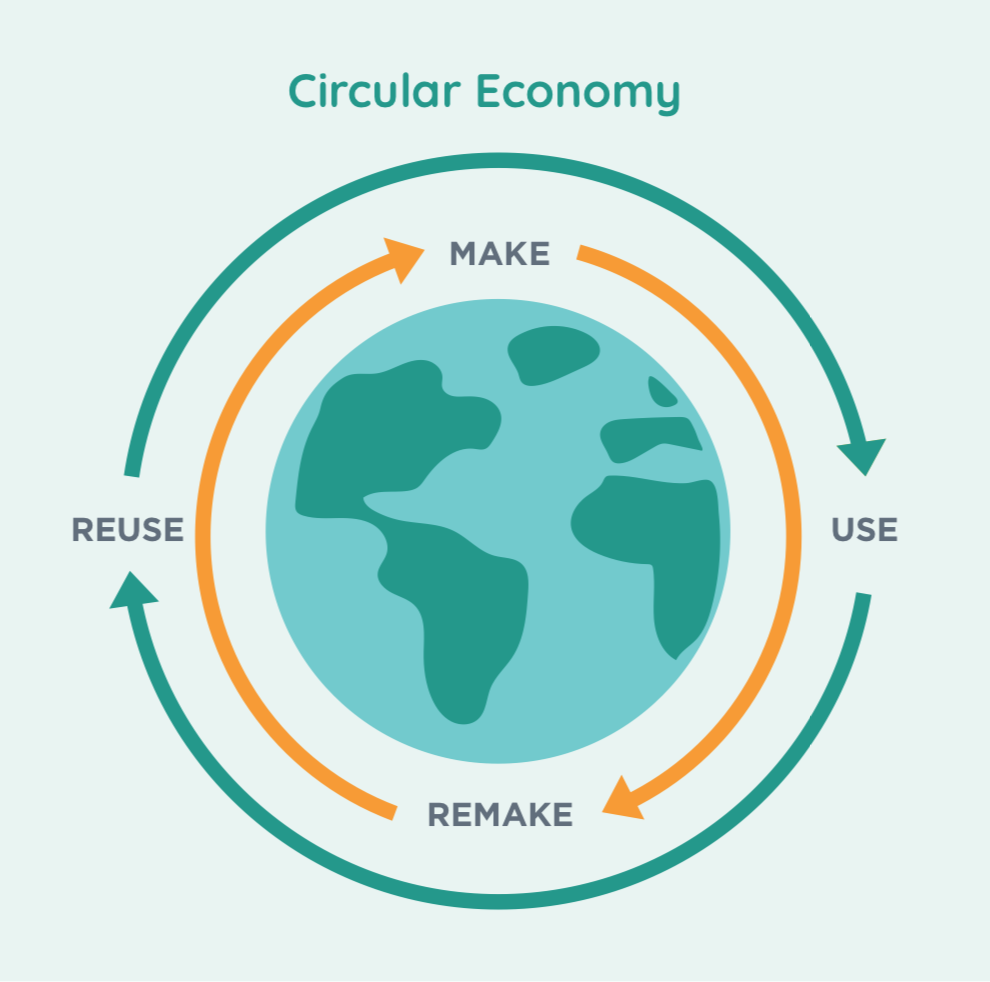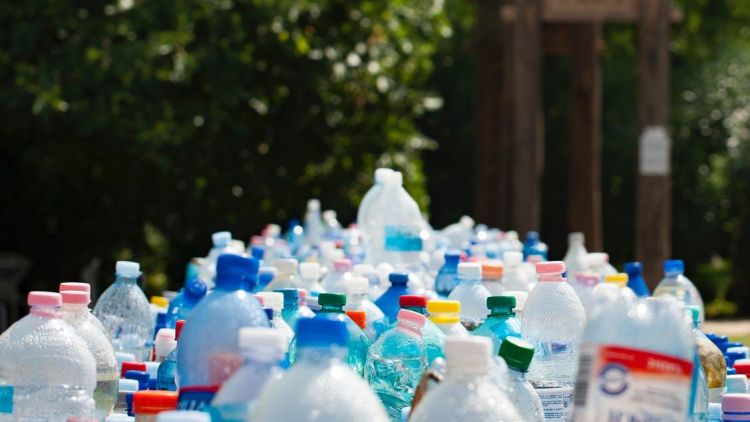Did you know? 12 per cent of total global waste is plastic. It is estimated that the annual global production of plastic is approximately 380 million tons. And half of this global production is for single-use plastics. Single-use plastics are found everywhere: at the grocery store in the form of plastic bags or food wrappers, at restaurants in the form of straws or water bottles, and the list goes on.
When incorporating the concept of a circular economy to every-day plastics, the goal is to reduce plastic waste by repurposing it to create something useful. Giving single-use plastics a second life at home or in the classroom is simpler than you might think. We have recently launched our new Circular Economy program, called Eco 360. And in addition, we would like to highlight ways that you can incorporate the concept of circular economy in your everyday life, particularly with regards to single-use of plastics. There are some great ways to start your new circular economy mindset but first, what is a circular economy anyway?
First, think about the common linear industrial model: raw materials or resources are collected and transformed into consumer goods, and then the products are thrown away after they have served their purpose. This model is commonly referred to as the “Take-Make-Waste Model” because waste is generated following the life of the product.

In contrast, a circular economy is an economic model where instead of producing waste at the end of a supply chain, the product is repurposed or eliminated from the system. This is an important concept in climate education because it limits the use of finite resources and encourages upcycling. In fact, the circular economy is one of the pillars of renewable energy, and has many ecological, economic and social benefits.
Now that you are familiar with the circular economy model, here are some ways that you can put it into practice in daily life through everyday plastics.
Check out which types of plastic can be recycled at school or home
On the bottom of most plastic products, you will find a recycling symbol with a number inside (1 through 7). There is also often an abbreviation for the type of plastic (PET, HDPE, etc.). Remember, not all plastics are created equal! The most widely accepted recyclable plastics are PETEs and HDPEs (types 1 and 2). Some examples of these types of plastics are soda bottles, milk jugs, shampoo and conditioner bottles. Be sure to check your local municipality’s website to find out what types are recyclable in your area. For more information, check out our Eco 360 activity on “Plastic Waste Management in Canada.”
Support sustainable circular economy initiatives in your community
There are several initiatives that collect plastics and other hard-to-recycle materials and repurpose them into useful items for sale. As a consumer, there are many ways to support these companies. In addition to donations or the purchase of products, some circular economy initiatives also encourage cleanup groups to partner with them! If you have a neighbourhood cleanup group, consider arranging for pickup of your single-use plastics, and watch them transform into useful gadgets such as phone cases, phone chargers, and even reusable packaging! Here are some great initiatives to check out: TerraCycle, 4ocean, Greentoys and Allbirds.
Try upcycling plastics in the classroom or home with DIY activities
This is a cool hands-on activity that you can do with students! Consider getting creative with some DIY crafts to transform plastic waste into useful household items. Below are some examples of what you could create. Also, check out our website for our Make-remake activity, which is part of our circular economy program!
DIY Watering Can: This craft works best with large plastic jugs such as laundry detergent bottles. Simply wash out the empty plastic jug, and drill or punch holes into the cap of the jug. This craft can also be painted or decorated to your liking. Now, you have a refillable DIY upcycled watering can!
DIY Plastic Bottle Terrarium: This craft works best with 2 L sized soda bottles. Coke bottles work best, because of their shape (they have a narrower area near the bottom of the bottle). First, remove the label from the bottle and make sure it is cleaned out. Then, carefully cut out the center of the bottle so that you have a top section measuring five inches and a bottom section measuring 3.5 inches. After this step is complete, add your supplies into the bottom part of the terrarium. It is best to layer pebbles, charcoal pieces and potting soil in that order. Next, add the plants of your choosing. Please note that not every type of plant will fare well in a terrarium: we recommend trying airplants, succulents or ferns for best results. Lastly, some decorative stones or moss can be added to complete your terrarium. Carefully place the top section of the bottle onto the bottom part of your terrarium, and watch your plants grow! This craft makes a great decoration or gift.
DIY Plastic Garden Planters: This craft can be created using 2Litre water bottles or smaller. First, remove the label and make sure the bottles are clean. Then, carefully cut around the water bottle, leaving four inches from the top. At this stage, the water bottles can be decorated with supplies of your choosing. Next, fill the top part of the water bottle with planting soil and seeds of your choice. Add water to the bottom section of the water bottle and remove the cap from the top section. Finally, lower the top half of the water bottle into the second half containing the water. Once plant growth begins, they can be carefully transferred into a garden or pot.
Lastly, check out and register for the Eco 360 Challenge!
This program is geared towards students from grades 9-12 and challenges them to create a feasible innovation plan that incorporates a circular economic model to eliminate plastic waste from the environment. By participating in this challenge, your students will be eligible to win up to $1000 for your classroom! To register for our Eco 360 Challenge, click here.
If you complete this challenge, we would love to see the results of your student work and classroom’s impact! Be sure to take photos and tag us on social media using @GreenLearning and the hashtag #GreenLearning. For more environmentally friendly and educational activities, check out our other resources.


